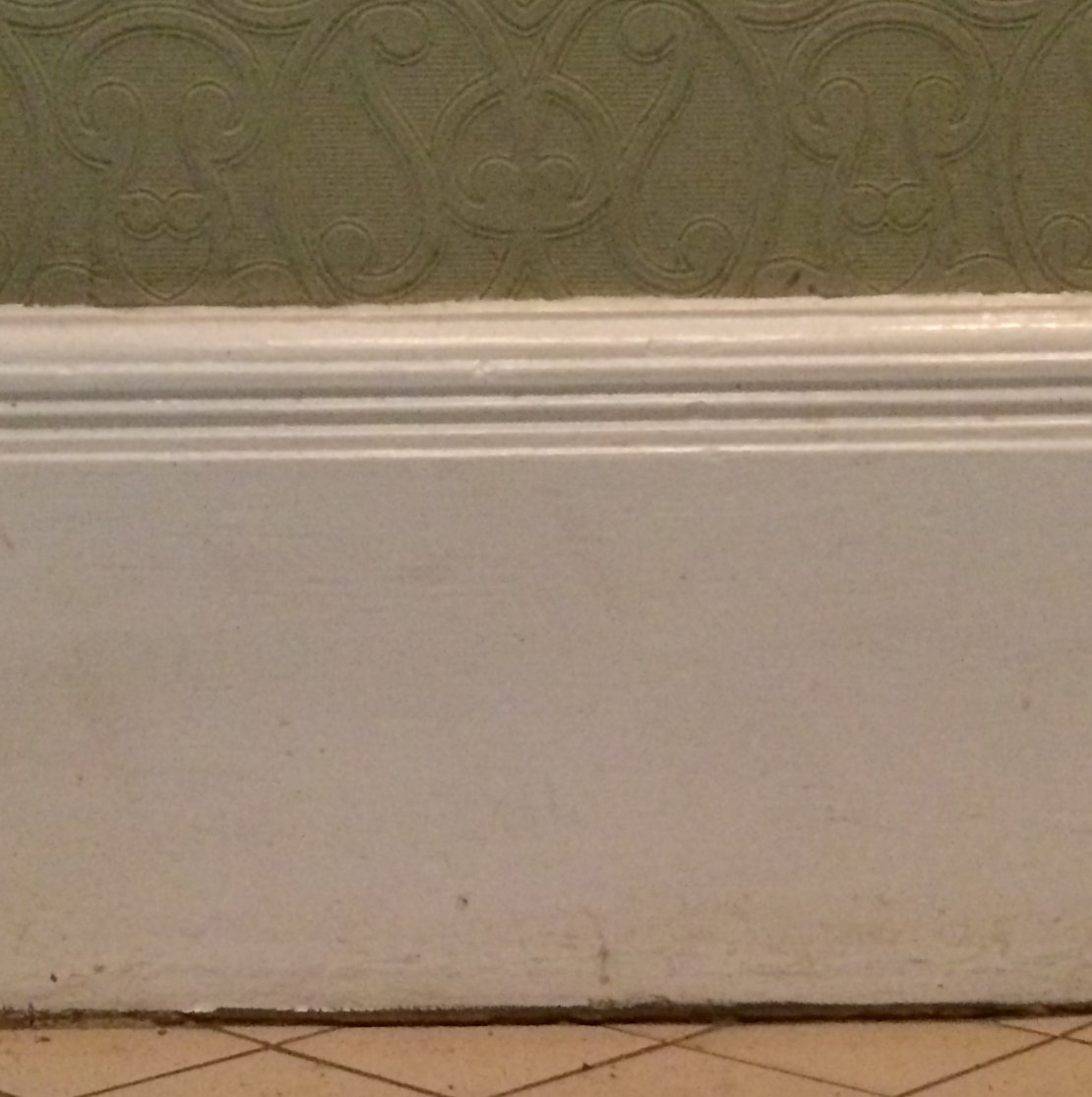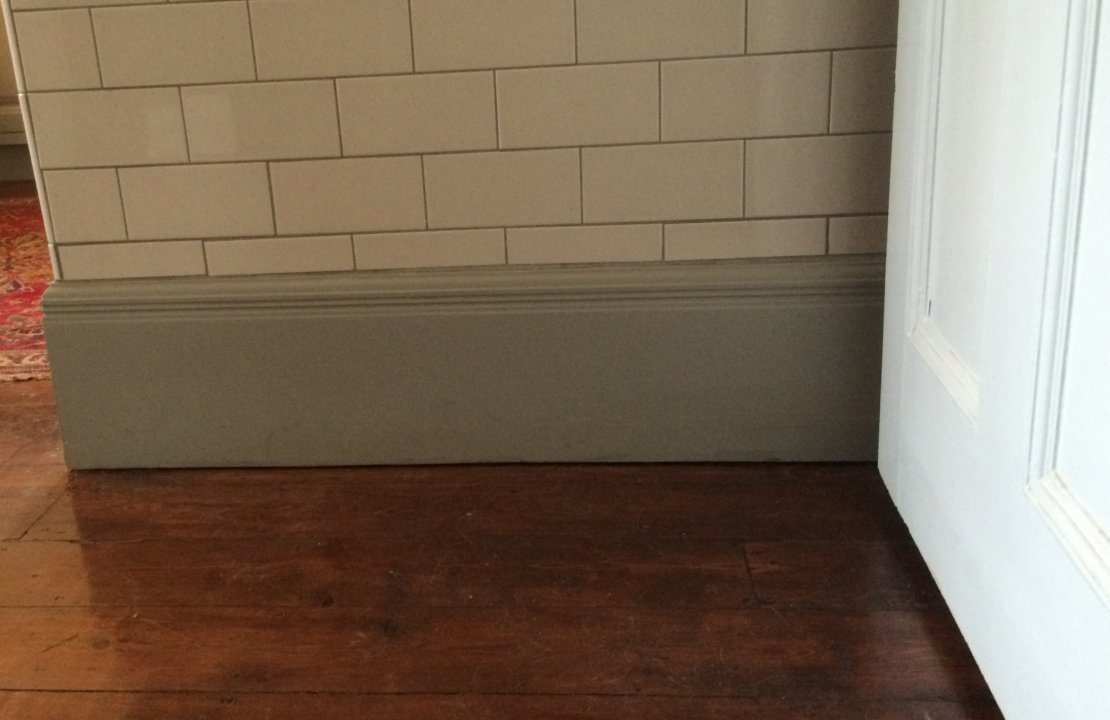Interior mouldings tend to be made of wood or plaster and consist of skirting boards, dado rails, picture rails, coving and ceiling roses. Plaster or wood coving used in rooms with higher ceilings tends to be large and ornate and needs to be balanced at floor level by the use of tall skirting boards. In these rooms the dado is usually larger and there are nearly always picture rail mouldings present, in order to break the wall up into sections and from which to hang pictures in order not to leave nail or screw holes in the walls. Wooden picture rails add a decorative element to any home, but furthermore, high ceilings allow for some spectacularly decorative ceiling roses and ceiling lights and encourage decoration in terms of paint and wallpaper to make a statement.
The function of the skirting board is inherently practical - to protect the wall from getting marked or damaged by shoes and boots, luggage, vacuum cleaners and mops. For this reason they are also sometimes called kickboards. And as can be seen in this image, using a darker colour rather than painting them in white helps them appear cleaner and smarter for longer.

Do you need tall skirting boards?
Tall skirting can be very attractive, enhancing the décor of the room as it acts as a large surface on which decorative elements can be included such as curves and ridges. Tall skirting boards can be more decorative than shorter ones just because of the sheer surface area they occupy. Add in the fact that it also provides a larger surface area to paint and it really becomes an important decorative feature. Using a tall skirting board also gives you the opportunity to use a large and more decorative Victorian architrave around your windows and doors which again adds balance and structure to your room.
Short skirting boards tend to be in the region of up to 10cm high and these would only be suitable for modern houses with low ceilings of around 7-8 feet. The shorter of the Victorian style skirting boards are around 117mm, with 168-192mm the skirting typically used in the smaller Victorian rooms with ceilings that are not especially high. The typical large proportioned Victorian room would ideally require skirting in the range of 215mm up to the very tall skirting boards of 300mm in height.
Why is it difficult to find tall skirting boards?
Typically it is difficult to find tall skirting boards manufactured and available for sale nowadays. This is because we are restricted not by the size of the wooden planks available from which to manufacture them, but by the capabilities of the machinery used to make the skirting boards. Due to modern health and safety rules, old style machines that could work effectively with wide planks are now illegal to use as they operated without automatic breaks and guards, breaking every health and safety rule in the book. The new machines with all their modern safety measures make it difficult to work with planks wider than around 25cm, although in theory they can machine to around 29cm. However at this width the finished surface can become ridged and uneven making the finished result of poor quality.
For this reason, tall skirting boards of over 21.5cm high tend to be made in two parts. The top decorative part is made as one piece with the bottom plain section made as a separate piece. The two pieces are then slotted together to make the tall skirting. The join is usually fairly imperceptible, the join being made at the point where the decorative section ends. These skirting boards might typically be made at a height of 30cm high.
Some common terms for skirting
Ogee and Torus are terms that are typically used to describe skirting board profiles.
An ogee profile tends to feature an s shape in the design of the skirting. Torus is a convex shape and tends to have a bump or curve near the top of the skirting profile.
The Victorian Emporium sells a wide variety of skirting boards from 117mm high to 300mm high


Be the first to add a comment...